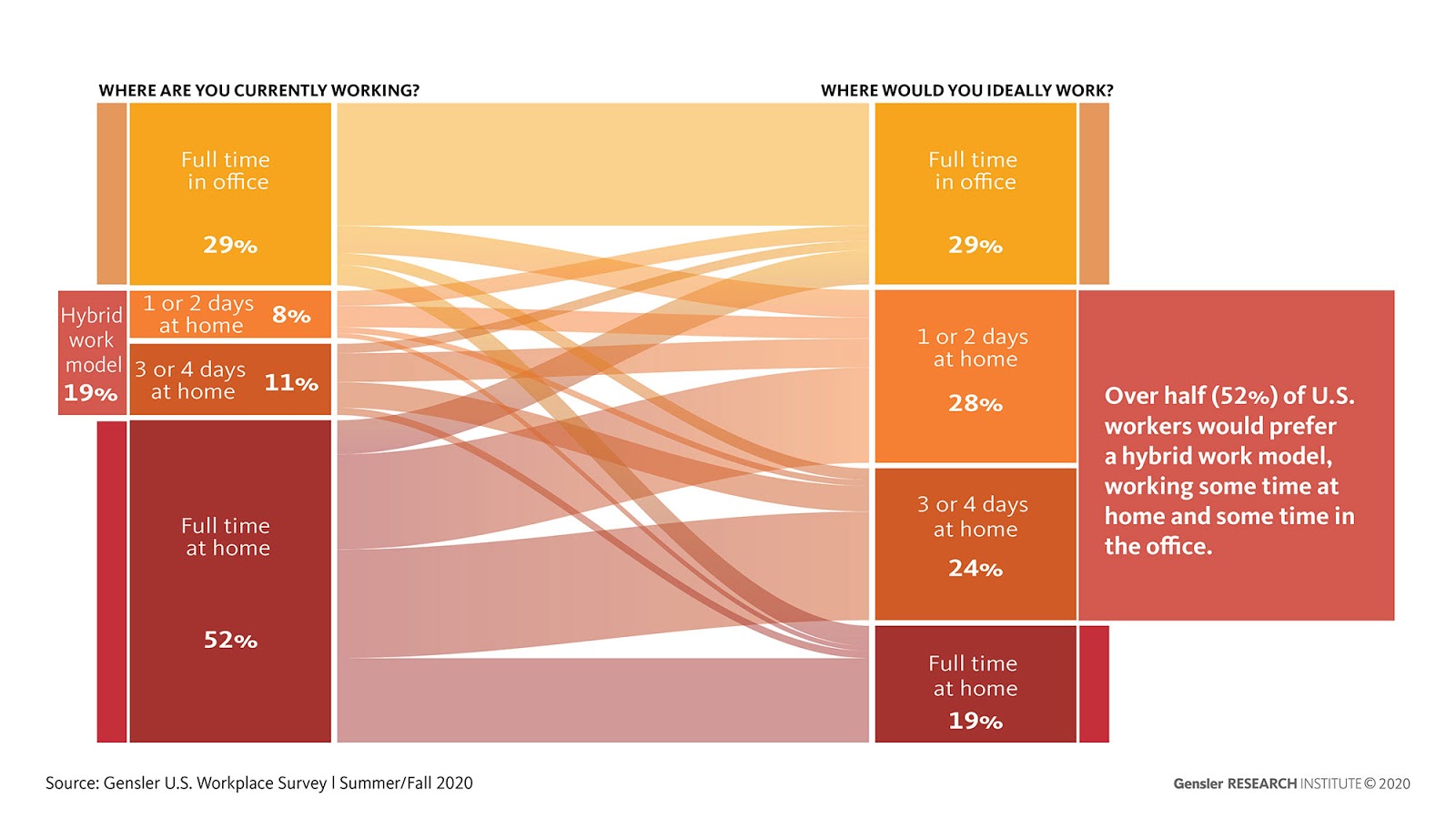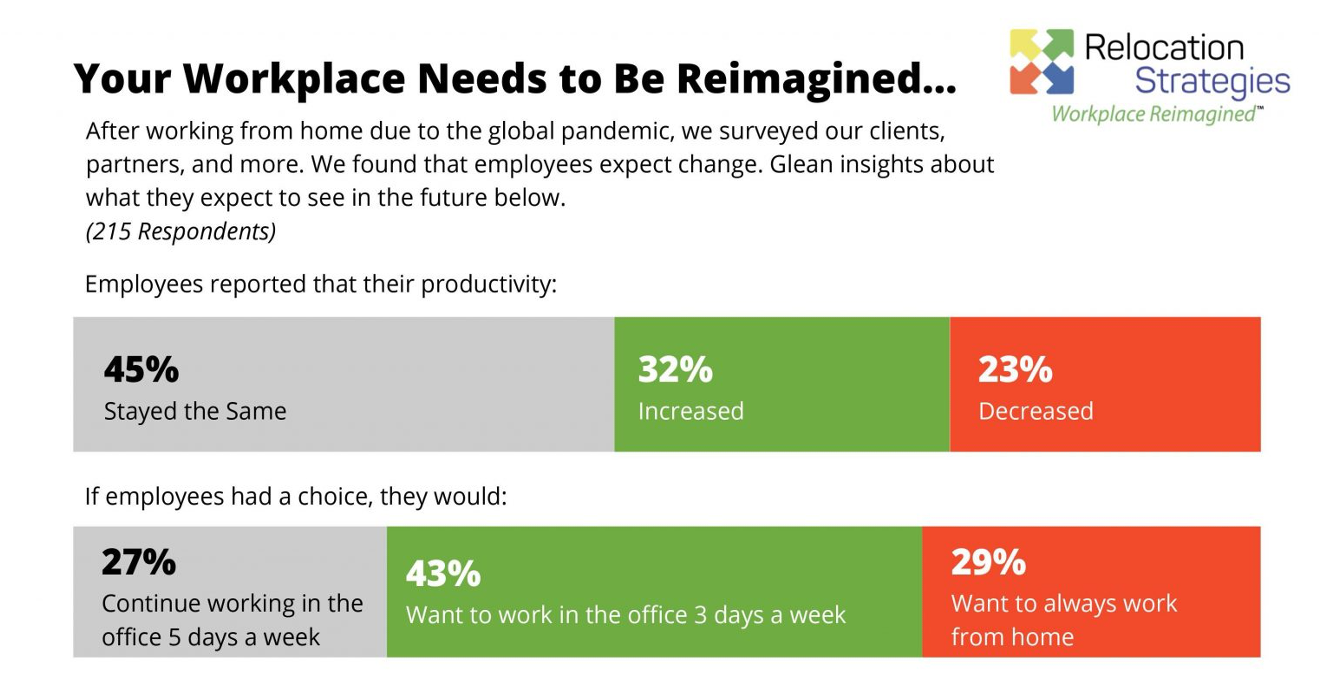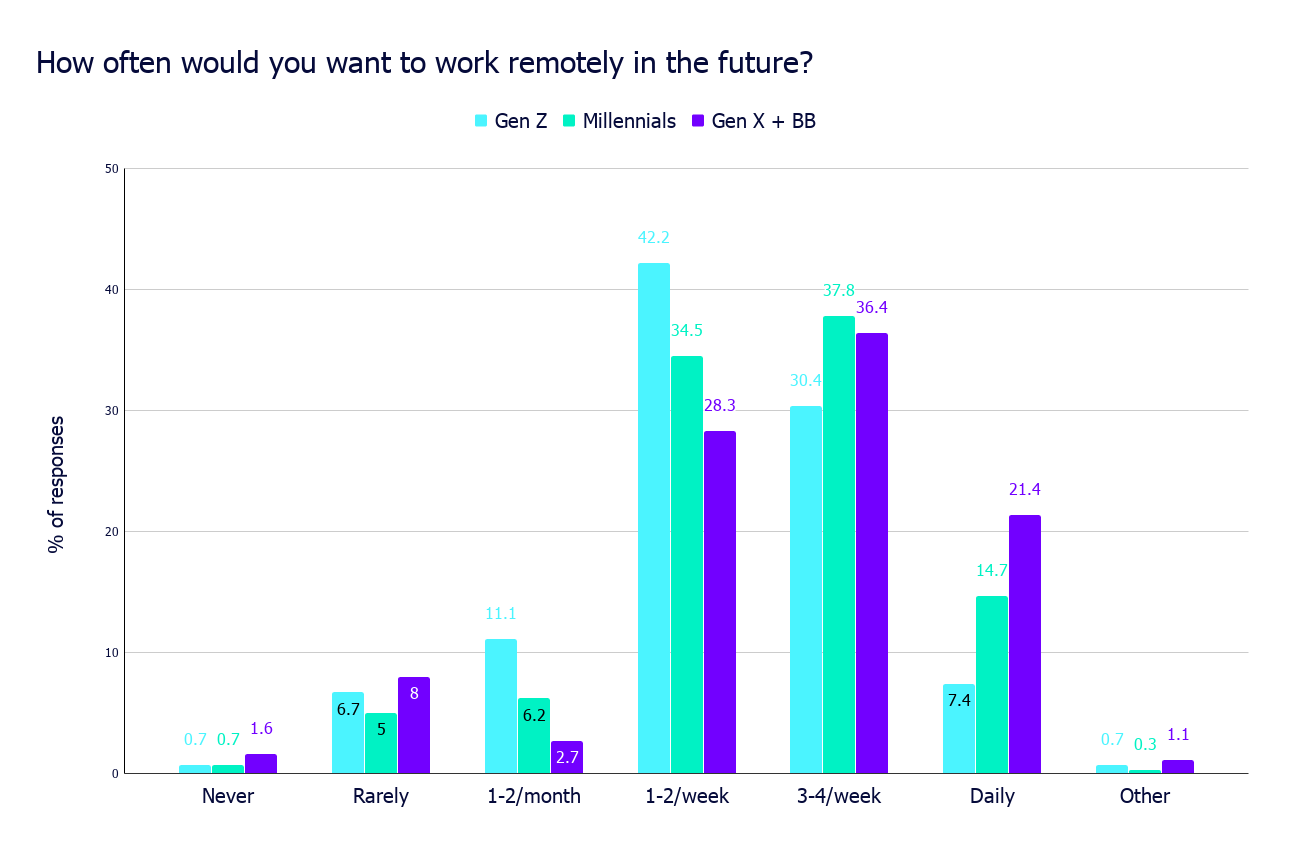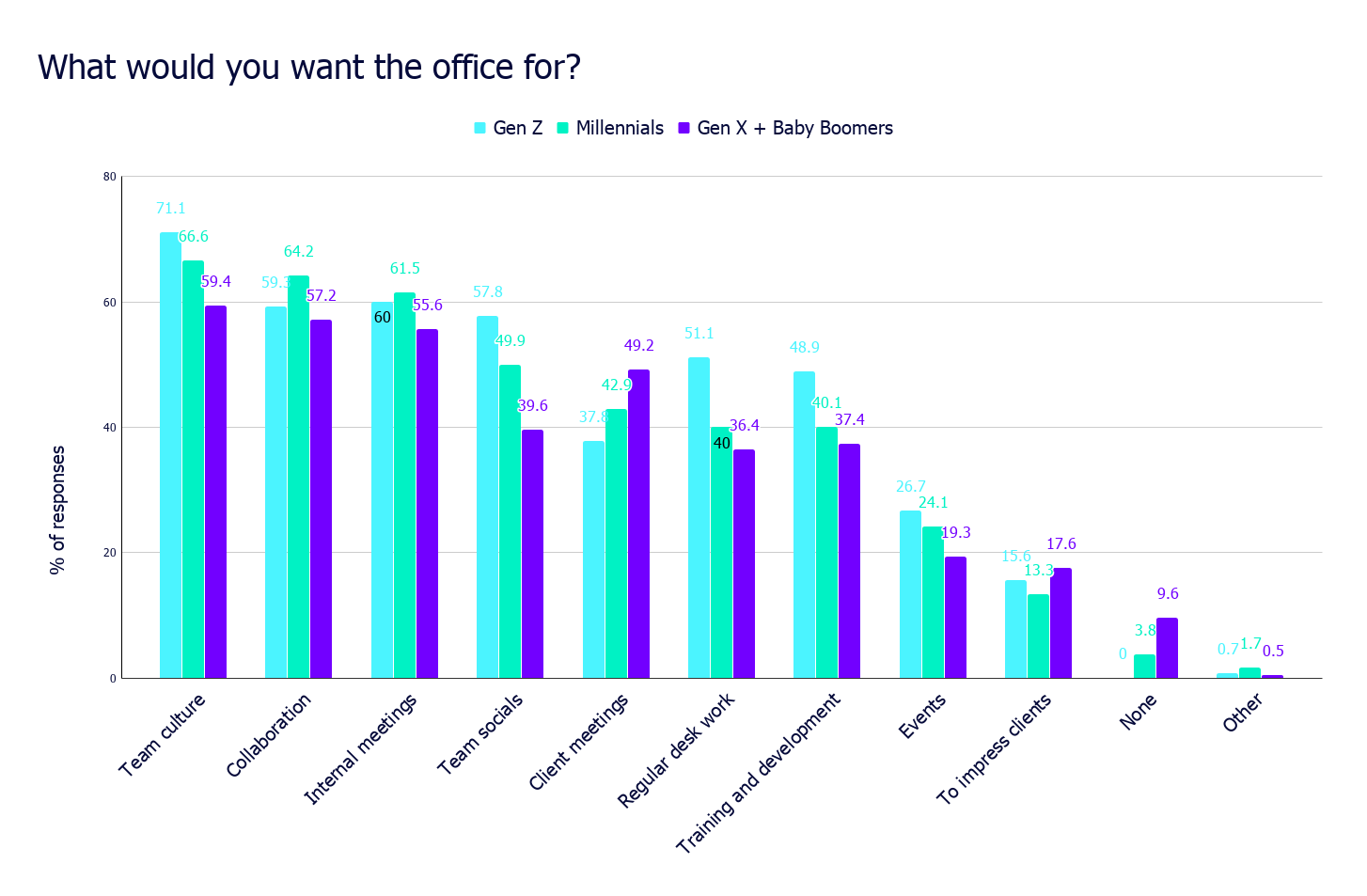The question that’s been on everyone’s mind since March 2020 is what does the future workspace look like? The answer greatly depends on your business, your goals, and your needs, but one thing is clear: workspaces have to be more adaptable than ever before.
The worldwide pandemic has changed the perception of the workplace, and the need to have butts in office seats every day of the week is a thing of the past. What used to be the universal expectation of going to the office has changed to a dreaded task. Instead, the new expectation is flexibility. The variety of generations that make up the workforce have different ideas on what returning to the office should look like prior to the pandemic and moving forward in the future.
Adding to the complexity of creating effective workplaces is the fact that around 4.2 million workers abandoned their positions in October, accounting for 2.8% of the overall U.S. workforce, according to data released by the Labor Department. Almost after two years after the pandemic began, we’re continuing to see job changes as well as job openings. In fact, the market has more open positions than people seeking work. It’s becoming more and more clear how important it is for businesses to have spaces and work cultures that attract and retain talent.
Let’s explore what’s next for the workplace and what you can do to be competitive.
The Impact of Working From Home
Conducting a survey in the fall of 2020, Gensler asked two simple questions:
- Where are you currently working?
- Where would you ideally work?

Unsurprisingly, 52% reported they were working from home while 29% were full-time in the office and only 19% were in a hybrid work model. However, of everyone surveyed, over half (52%) indicated that they’d prefer a hybrid work model with some time at home and some time at the office. Only 19% want to be full-time at home, and 29% want to be at the office full time. While working from home offers a lot of benefits, employees are still finding value in coming into the office to collaborate and be productive.
These results are very similar to what we found in our workplace survey. The majority of people want to have the flexibility of working from home while also coming into the office part of the week.

Comprehensive data from Hubble further supports these findings and provides further insight into generational preferences. Based on recent polls, Gen X & Baby Boomers, Millennials, and Gen Z all want more flexibility with their office schedule. Gen X & Baby Boomers, and Millennials would prefer to work from home more often to reduce their commute, help with family needs, and be more productive. Gen Z would like to have a hybrid work environment that lets them have flexibility, but also give them the space to collaborate in person, have a focused environment, and to create social relationships with their coworkers.

All of the data supports that businesses have to reimagine their workplace to support the needs of the business but also to meet the needs of their employees. Workplace satisfaction is playing a big part in employee satisfaction, and employees are making choices about whether to stay or leave based on how organizations are handling this transition.
The Traits of an Effective Workplace
It’s no surprise that the main reason people want to come to the office is people. Employees prefer to collaborate in-person as well as socialize. They want to be energized by others while also having the space they need to get their work done.
Employers also want their employees in the office. According to a recent survey conducted by PwC, 87% of executives believe the office is critical for collaborating with team members and building relationships.
Put simply, workplace satisfaction bolsters employee engagement. When surveyed by Steelcase, only 11% of respondents indicated they were highly satisfied with their work environment. These respondents were also the most engaged. There is a direct correlation between employee engagement and productivity, which I’ve been saying for years.
Steelcase found that highly-engaged employees reported their workspace allows them to:
- Concentrate easily
- Freely express and share ideas
- Work in teams without being interrupted
- Choose where to work within the office based on the task
- Feel relaxed and calm
- Feel a sense of belonging to their company and its culture

While these are generally good strategies for creating effective workplaces, data from Hubble shows that generations want different things, and companies are stuck on what they should do to meet all of the new expectations. One thing is clear: the office space needs to be designed for collaboration and interaction, not for sitting at a desk all day.
When thinking about how to reimagine your space while also trying to meet the needs of your employees, focusing on the traits above will be imperative to providing conducive spaces for engagement and productivity. Do you know how to reimagine your space so it provides value to your employees so they’re highly engaged and productive? The first step is to ask. (Learn more about that here.)
The Future of Workspaces
The future of work is most certainly hybrid, and, as a result, space design will change. Based on our experience and the current needs of our clients, we’re finding that the future office will consist of:
- Hotel offices and cubes that can be scheduled
- More collaborative work areas
- More small 3-5 person conference rooms
- More phone booths
- Less open office with low wall panels
- More amenities for staff who make minimal visits
Do you know how to make changes to accommodate employees? Do you know what matters most to them?
We’ve been helping organizations reimagine their workspaces for over 35 years. Of our clients surveyed, after our Workplace Productivity AnalysisⓇ was administered, employee engagement rose by 25%. Let’s chat more about how we can help you reimagine your workspace.
